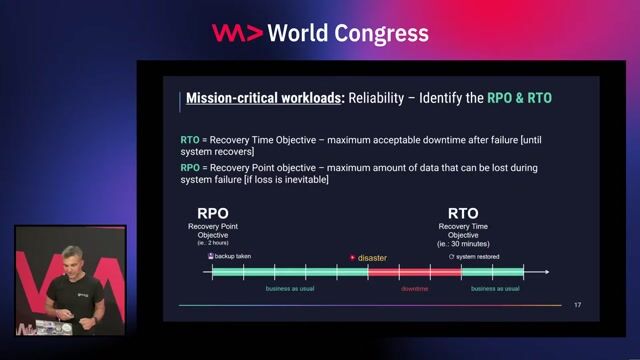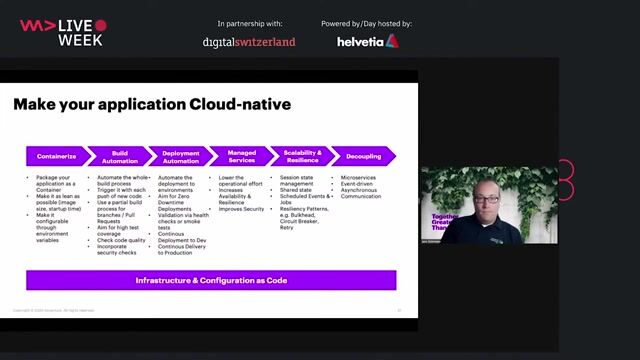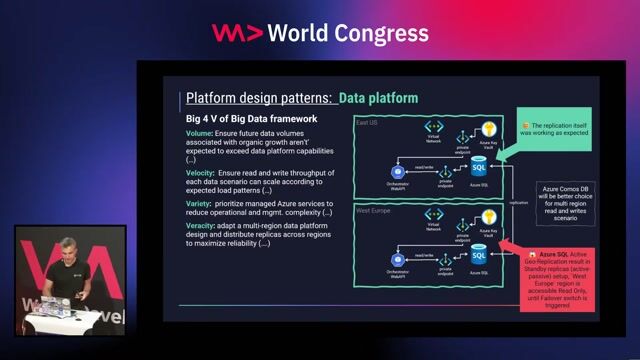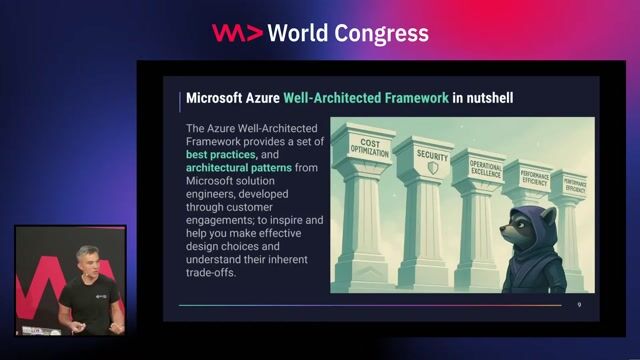Mihaela-Roxana Ghidersa
System Resilience: Surviving the Software Storm
#1about 3 minutes
The business necessity of system resilience
An e-commerce site failure during a Black Friday sale illustrates how downtime leads to financial loss and why resilience is essential.
#2about 5 minutes
Understanding faults, failures, and tolerance mechanisms
A fault is a latent bug in the code, while a failure is the observable crash it causes, which can be mitigated with fault tolerance and fail-safe systems.
#3about 5 minutes
Navigating the challenges of modern software development
Modern systems face challenges from increasing complexity, evolving technology, and high user expectations, requiring a balance to avoid over-engineering.
#4about 3 minutes
Building resilience across all software stack layers
True resilience requires a holistic approach that addresses the infrastructure, application, and database layers, as well as the crucial human layer of team culture.
#5about 4 minutes
Core strategies for building resilient systems
Key architectural strategies for resilience include implementing redundancy, failover mechanisms, load balancing, and using availability zones or microservices.
#6about 5 minutes
Implementing disaster recovery and secure coding practices
Proactive resilience involves creating a disaster recovery plan through risk assessment and empowering developers to contribute through secure coding practices.
#7about 7 minutes
Using monitoring and continuous testing for improvement
A continuous improvement cycle is driven by monitoring system health, using automated testing to catch issues early, and analyzing failures to learn from them.
#8about 2 minutes
A practical starting point for individual developers
Developers can significantly impact resilience by focusing on core software quality attributes like performance, security, scalability, and maintainability.
#9about 3 minutes
Adopting a proactive mindset for future resilience
The future of resilience lies in a proactive approach, embracing innovations like AI for predictive failure analysis and fostering a culture of continuous adaptation.
#10about 4 minutes
Balancing security practices with system performance
Security and performance are not a trade-off but a balance that must be determined by the specific context and priorities of the system.
#11about 4 minutes
Prioritizing components when designing for resilience
Focus resilience efforts on foundational components like infrastructure and architecture, as these "shearing layers" are the most difficult and costly to change later.
#12about 5 minutes
Communicating the value of resilience to stakeholders
To get buy-in from decision-makers, present a data-driven business case that clearly documents the financial losses and risks associated with poor resilience.
Related jobs
Jobs that call for the skills explored in this talk.
Matching moments

07:42 MIN
Using application design patterns for system resilience
Azure-Well Architected Framework - designing mission critical workloads in practice

24:38 MIN
Using long-running patterns to build resilient systems
Are you done yet? Mastering long-running processes in modern architectures

00:04 MIN
The inevitability of software failures in real life
Azure-Well Architected Framework - designing mission critical workloads in practice

35:31 MIN
Implementing advanced patterns for resilience and decoupling
Cloud-nativeApplications- What’s the buzz about

01:59 MIN
Understanding resilience as an investment in reliability
Empathy: The secret sauce of Resilience

03:39 MIN
Understanding the key layers of application resilience
Building resilient .NET applications for the modern age

24:47 MIN
Understanding critical architectural trade-offs and anti-patterns
Azure-Well Architected Framework - designing mission critical workloads in practice

27:25 MIN
Implementing resilience patterns like caching and fallbacks
Microservices with Micronaut
Featured Partners
Related Videos
 28:31
28:31Building resilient .NET applications for the modern age
Sander ten Brinke
 58:19
58:19Typed Security: Preventing Vulnerabilities By Design
Michael Koppmann
 58:23
58:23Building high performance and scalable architectures for enterprises
Luka Samaržija & Ivan Sokol
 51:41
51:41Climate vs. Weather: How Do We Sustainably Make Software More Secure?
Panel Discussion
 26:08
26:08Durable Execution: A Revolutionary Abstraction for Building Resilient Applications
Maxim Fateev
 27:33
27:33Azure-Well Architected Framework - designing mission critical workloads in practice
Paweł Siwek
 26:51
26:51The Resilience of the World Wide Web
Niels Leenheer
 37:33
37:33Applying Agile Principles to Incident Management
Tobias Dunn-Krahn
From learning to earning
Jobs that call for the skills explored in this talk.


Cloud Engineer (m/w/d)
fulfillmenttools
Köln, Germany
€50-65K
Intermediate
TypeScript
Google Cloud Platform
Continuous Integration

Senior AI Software Developer & Mentor
Dynatrace
Linz, Austria
Senior
Java
TypeScript
AI Frameworks
Agile Methodologies

Senior Fullstack Engineer – Angular/.Net (f/m/d)
Apaleo
München, Germany
Remote
€65-85K
Senior
.NET
Angular
JavaScript
+1

SENIOR DEVOPS ENGINEER (M/W/D)
Wilken GmbH
Ulm, Germany
Remote
Intermediate
Senior
Azure
Gitlab
Terraform
Kubernetes


Senior Fullstack Engineer (all genders)
envelio
Köln, Germany
Remote
Senior
Python
JavaScript
Structured Query Language (SQL)
![Senior Software Engineer [TypeScript] (Prisma Postgres)](https://wearedevelopers.imgix.net/company/283ba9dbbab3649de02b9b49e6284fd9/cover/oKWz2s90Z218LE8pFthP.png?w=400&ar=3.55&fit=crop&crop=entropy&auto=compress,format)
Senior Software Engineer [TypeScript] (Prisma Postgres)
Prisma
Remote
Senior
Node.js
TypeScript
PostgreSQL

Software Engineer
tree-IT GmbH
Bad Neustadt an der Saale, Germany
Remote
€54-80K
Intermediate
Senior
Java
TypeScript
Spring Boot